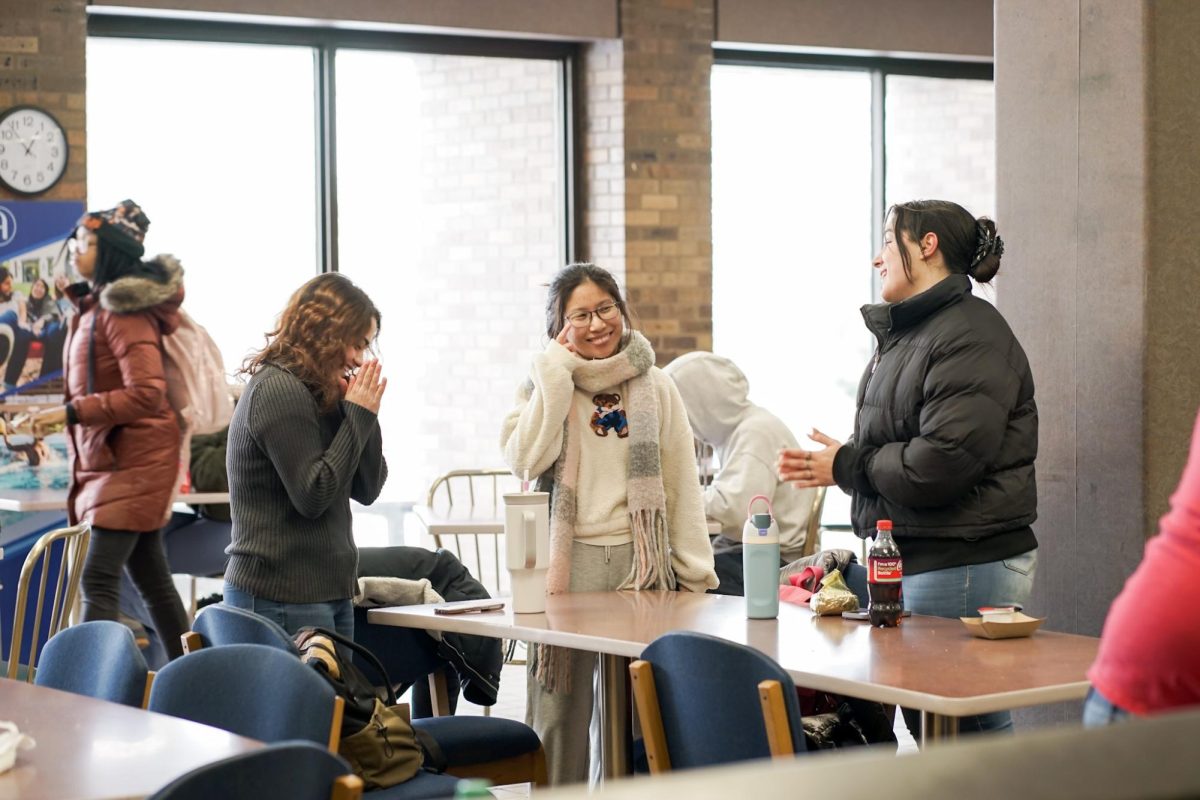Augustana’s annual series of Hispanic Film Festival showings is currently in progress with a different movie presented each Wednesday night in the Hansen Lecture hall. Introductory Spanish courses traditionally assign these viewings to students; but does turning these films into an assignment help students learn more of the language or about Hispanic Culture?
Professor of Spanish Studies, Dr. Jeanneth Vázquez, founded Augustana’s Hispanic Film Festival in 1994 with the goal to broaden students’ perspectives on the arts and culture of Spanish-speaking countries outside of the classroom.
“We want to challenge students with political, social, economic and cultural issues,” Vazquez said. “Most films students see are American films, so we give them this magnificent opportunity to broaden their knowledge about the world.”
Every year, the festival presents internationally-recognized films that would otherwise not be shown in the Quad Cities, which also creates a great opportunity to connect Augie to the QC community.
“Our goal is to increase the community awareness and appreciation of Hispanic culture and art,” Vazquez said. “In that regard, we join the efforts of other colleges and universities in the area.”
Hosted by the Multicultural Office of Student Life — the Spanish Department’s collaborator for the festival over the last few years — both students and members of the Quad City community came to Hansen to see “Truman,” a highly-regarded and multiple award-winning film. In order to ensure Augie students attend the festival, introductory Spanish classes often turn it into a required assignment: a one page reflection usually followed by a class discussion.
Although film can be one of the best ways students interact with different languages and cultures, does making it a required assignment lessen the value? Is the festival effective in engaging students, or do they treat the film with the same indifference as they would any other assignment?
Peyton Heisch and Bendon Leon, first-year students, were both excited to have the opportunity to watch a film they otherwise wouldn’t have known about. When asked if they thought this would be an effective assignment, they agreed film is one of the best ways to learn about other cultures.
“I think that they have all the teachers get together and make the students go to so many [films] so that we’re immersed into more than just their class… I think it’s kind of cool,” Heisch said.
“It’s good that they make us interact with more of what we have on campus,” Leon said.
Other students were less than enthusiastic. Christopher Plantz, junior, wasn’t sure if he’d be engaged by the film at all.
“I am somewhat excited. We do have to do it for the class, but it seems relatively interesting from what I’ve looked [at] online,” Plantz said. “It definitely is not my favorite thing to do on a Wednesday night, but just hearing the language and just getting a little taste of what goes on Hispanic culture is a good idea… it can’t hurt.”
Many students understood how the film could be useful to their understanding of their class subject, but most students like first-year Ashley Gennardo admitted they were seeing the film “mostly for an assignment.” Its connection to their grade seemed to take the value out of the film, as their focus was put into what they could say about it in a one page paper.








































































































